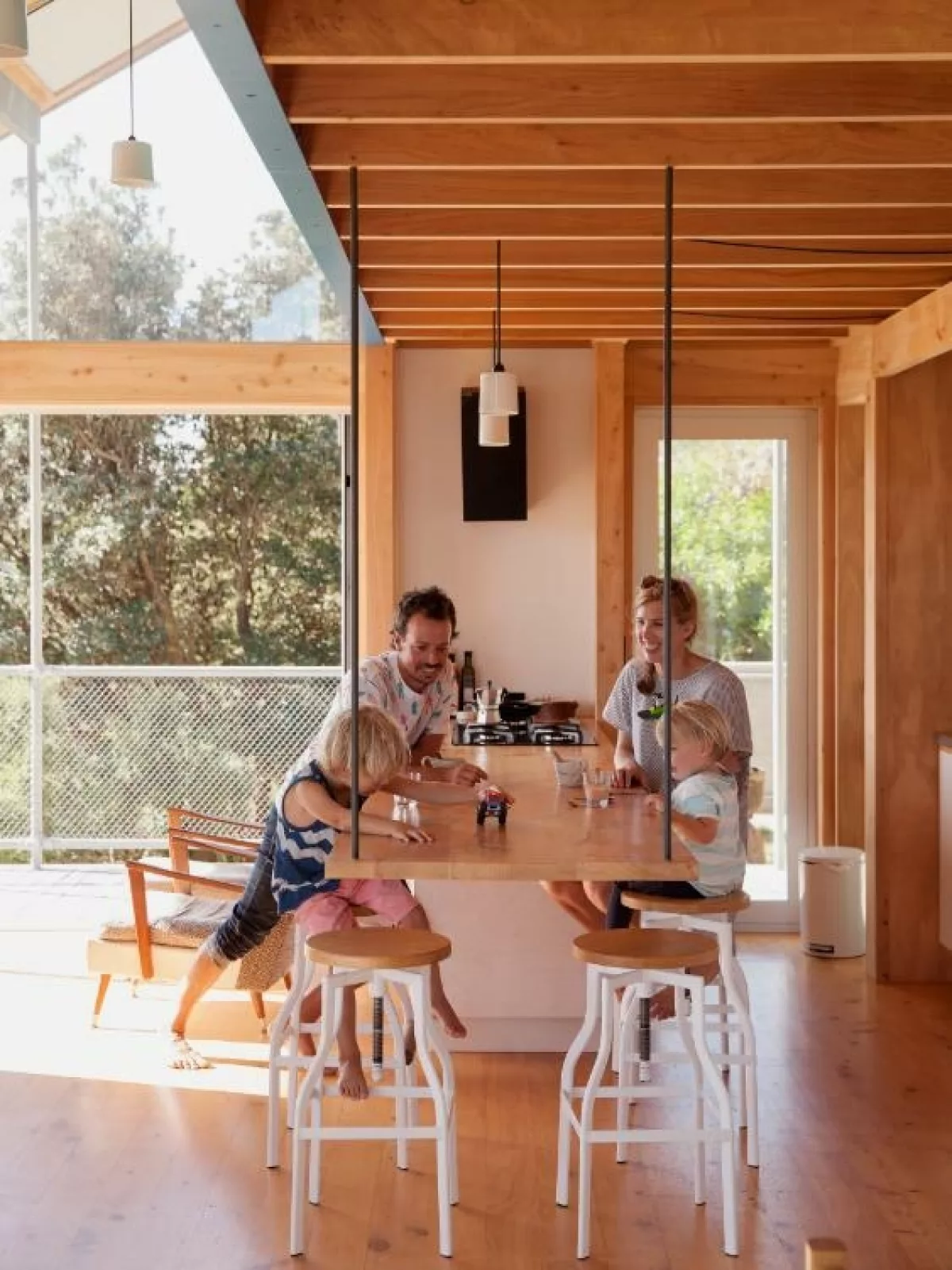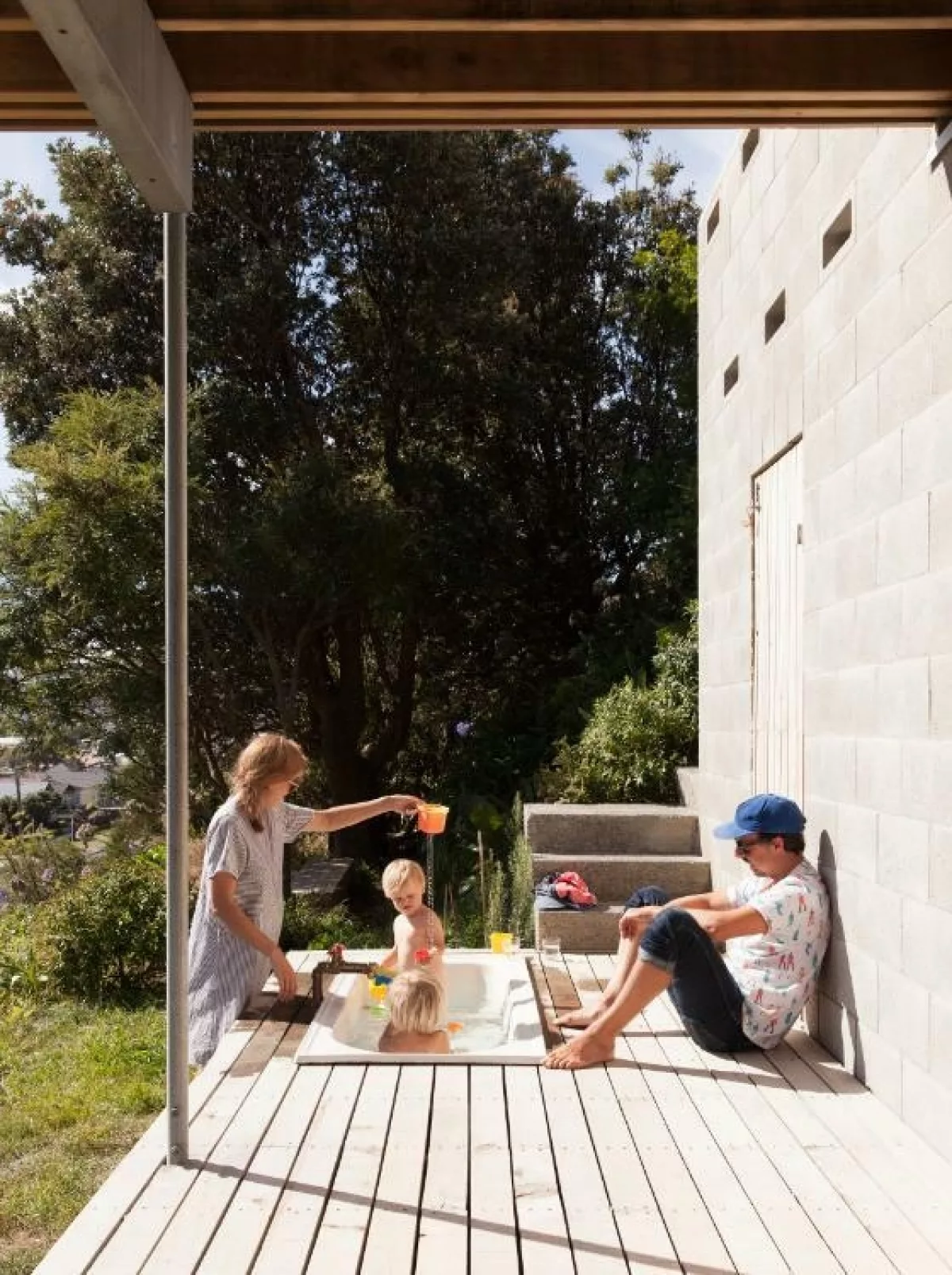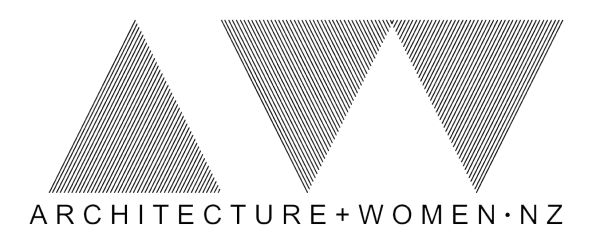Care | Work Series - #2 Caroline Robertson
10 Apr 2022In the second of the A+W NZ Care | Work Series of interviews, Caroline Robertson discusses the way architecture and the work of care are managed at Spacecraft Architects.

1. Introduce yourself! What is your current role/responsibilities at work and at home?
Kia ora! I’m Caro. A pākehā wahine of Anglo/Irish descent living and working in Te Whanganui a Tara on the lovely Te Motu Kairangi in a home/office that we designed for ourselves. “We” is Tim Gittos and I, co-parents of Sam (9) and Finn (7) and co-directors of Spacecraft.
The firm was started when we found out I was pregnant with our first. We are now a five person firm so Tim and I are both involved in the feasibility and concept work, and we do the initial meetings/brief setting and office admin between us. Then one of the five of us will take on the project through to building consent. That’s the idea at least — projects often swap hands because of the stop/start nature of the varying project timelines.
I officially have a 0.8 work week expectation and am always prepared to spend the afternoon with the kids, while Tim has a resting setting of full time work. (We don’t work overtime so this means 8.30am–5.30pm).
2. What does a typical working day look like for you?
Tim and I take turns to get up at 6:30am with our oldest child. The younger one typically wakes later. Whoever gets up does the breakfast/snack box and gets the kids dressed. If I get up first, I then tag out when Tim gets up and do some form of exercise. If Tim gets up first, I take over around 7:30am. I always take our kids and the neighbours’ kids to school. I get back home (our office is in our house) at 8.45am and start work.
We have four of us in the Wellington office and so each of us makes lunch once a week and we go out the other day of the week. We are typically at our desks most of the day with various conversations across the office, sometimes going for site visits for new projects or onsite projects.
Our neighbour brings the kids home at 3.15pm and usually I do stuff with the kids for the afternoon, sometimes Tim. Because we are so present in each other's work and life we can change who has the 3–6pm slot with the kids depending on who is in the middle of something.
3. How much time did you take off? When you returned to work, were you part-time or full-time?
CHILDREN
We decided with the children that we were comfortable with the following age/care situation
AGE CARE
0–1 Stay at home — desk work during nap times
2 Day care 9am–2pm — two days a week
3 Kindy 8.30am–2.30pm — two days a week
4 Kindy 8.30am–2.30pm — three days a week
We swapped afternoon care with our neighbours regularly so I could work at least one full day a week.
5 SCHOOL!
I have always officially ‘worked’ the hours that the kids were at kindy/school and so time at the desk has ramped up over the years from only working at the desk in nap times, when the first was born, to a 0.8 work week. Our office has always been at our house so we’ve always been able to have strategy/design conversations throughout the work day, which means I've maintained the directorship role continuously.
My production of working drawings and sole point of contact for projects came back online once I was working more than 20 hours. Prior to that Tim would know where everything was tracking and pass me parcels of work that fit into the larger schedule.
We figured the admin of kids and the admin of work/office admin/design development/building consent were roughly equivalent. I was prepared to be the main kid carer, but if I hadn’t been Tim would have, because he felt strongly about the age appropriate main carer time with kids outlined above. On reflection, we both think we got to do the fun parts of parenting and the fun parts of work.

4. Have you returned to the same role as before? Have your career goals/aspirations altered?
I was a sole practitioner prior to having the first child, I registered in 2010 and we started our practice Spacecraft in 2012, just before our first child was born. Spacecraft has grown (along with our children) and we have gotten more work year on year.
Tim and I have always been interested in architecture designed to be comfortable, climatically responsive spaces respectful of their environment, ideally affordable for people like us that just have normal incomes.
5. When do you squeeze in time for yourself — do you have any hobbies?
We take the kids to their kindy/school by walking/biking/scooting in order to have refreshing outdoors time between home activities and work activities. I’ve been jamming more intensive exercise into the half hour between making snack boxes and taking the kids to school, and can also occasionally manage to do yoga while settling the kids to sleep at night. Recently, I’ve started walking in the ngahere more, and doing some form of meditative exercise when I might have otherwise watched movies.
I spend a couple of hours making pottery once a week which results in actual immediate creations — which is good when architecture and child-rearing have such long/slow achievement loops.
6. What is one thing your work has done to help enable you as a working parent?
Self-employment with my co-parent is ideal, because we are equally responsible for and have agency to make all our decisions and thus can distribute work/care tasks between ourselves without meeting hard external barriers, like employers expectations. It means Tim and I really understand the trade-offs between work and parenting and actively choose the balance that works for us best. This avoids the inter-parent resentment that can arise when less choice is available. We always know the best foot is being put forward on whatever front and we all gain together — which is ace.
As employers we try to extend that to our colleagues by allowing/preparing for extreme flexibility with work hours and locations.
7. What are some challenges you faced as a working parent?
The biggest challenge was adjusting to new expectations of how long it takes to get work done. This allowed me to plan for work realistically, and to not beat myself up for seeming comparatively unproductive to my pre-parenthood self.
As I was self-employed prior to having children, I had a resting expectation that a building consent for a house would take 4–6 weeks, for example, but working part-time, with other oversight roles in the business and the work of three new colleagues to coordinate, that extends to 8–12 weeks. It was helpful to acknowledge that more changes have happened to influence this than just the children.
I would have liked to take this understanding back to my early parent self so I didn’t feel unnecessary pressure while working that out.
8. What is your opinion of ‘having it all’ as a working parent?
I think I actually do “have it all” — but that’s probably just because I have the luxury of choice in almost all areas. Having gone through a bit of trial and error, I really know that each choice is a reflection of our values and so I’ve actively chosen my ‘balance’.
It probably comes down to having great communication between Tim and me, so that we don’t just stick out hard situations, we do what we can to improve them and recognise what we’re gaining from knowing what the alternatives look like.
We have prioritised pockets of really good active time with our kids which, I think, helps them feel valued/balanced. This is what matters in terms of caring/parent relationships to us.
9. What sort of support structure did/do you have?
Our best support structure is our neighbours who bought the section with us and built a year after us. They have kids similar in age to ours. We have an almost unbelievably good relationship with them, I thank my lucky stars every day.
I generally feel really competent at work and probably would have liked more support with how to parent and to make us feel like I/we were doing a good job there, but we have found support from our community and reading to gain confidence.
In all things, hearing from others’ experiences gives so much perspective and almost always makes me feel better about how we are handling things. Both work and parenting can seem easy at a glance, but inevitably everyone is managing complexity and trading off.

The A+W NZ Care | Work Series collects a diverse range of stories portraying the challenges of balancing career and family. Through sharing experiences and guidance, A+W NZ aims to provide support to those working whilst caring for family and/or others in their community and stimulate wider conversations in the industry.
Interview by Caroline Bartlett with Caroline Robertson
Edited by Wing Chan












